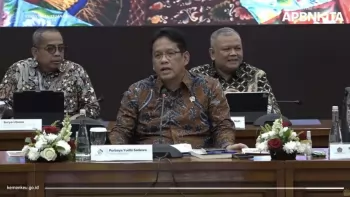
News Update
Purbaya Gives Ministries 16-Day Deadline to Finalize Budget
/index.php
Bisnis | Ekonomi - Posted on 03 February 2024 Reading time 5 minutes

DIGIVESTASI - Surprisingly, Indonesia has a region known as the "lost world". It all started when scientists argued that Sumba was home to many species of animals, most of which became extinct thousands of years ago.
These extinct animals include small elephants, mice, giant lizards, and even Komodo dragons. This was revealed by the researchers in a journal entitled "Proceedings of the Royal Society B". The report mentions the discovery of fossils of these animals. The report mentions fossils of various species living in Sumba around 12,000 years ago, as quoted by Mongabay, Saturday (2/3/2024).
In fact, the report found serious findings indicating that rare animals originally lived in the Sumba region. This is even more convincing when fossils of Komodo dragons are found, which currently only live on Komodo Island, Flores. This suggests that the now rare animal actually originated in Sumba.
The extinct animal research expedition took place from 2011 to 2014. The research team came from the Zoological Society of London (ZSL). They collected fossils in Sumba, part of the archipelago once known as "Wallacea." This region originated with biologist Alfred Russel Wallacea, who first established regional boundaries based on the distribution of animals in Indonesia in the 19th century.
The Wallacea region includes Sumba, Sulawesi, Lombok, Flores, Halmahera, Buru and Seram. The Wallacea region became famous in 2004, when an archaeological team discovered the fossils of an extinct creature known as a "hobbit" or Homo Floresiensis. This creature was found in Flores, north of Sumba.
Until now, research on Sumba itself has been sparse. There has not been much research on fossils and wildlife. "Maybe because there are so many islands in Indonesia to study," says ZSL researcher Samuel Turvey. "There aren't many biologists or paleontologists who focus on the diversity of Indonesia." The scientists hope to conduct further research on Sumba to better understand the evolution of species in the region.
"Discoveries in this area can open up incredible insights into a lost world," Turvey explains. Many animal species evolved on the remote islands of Wallacea, only to disappear with the rise of modern human civilization.
Find more news and articles on Google News
Source: cnbcindonesia.com
What do you think about this topic? Tell us what you think. Don't forget to follow Digivestasi's Instagram, TikTok, Youtube accounts to keep you updated with the latest information about economics, finance, digital technology and digital asset investment.
DISCLAIMER
All information contained on our website is summarized from reliable sources and published in good faith and for the purpose of providing general information only. Any action taken by readers on information from this site is their own responsibility.